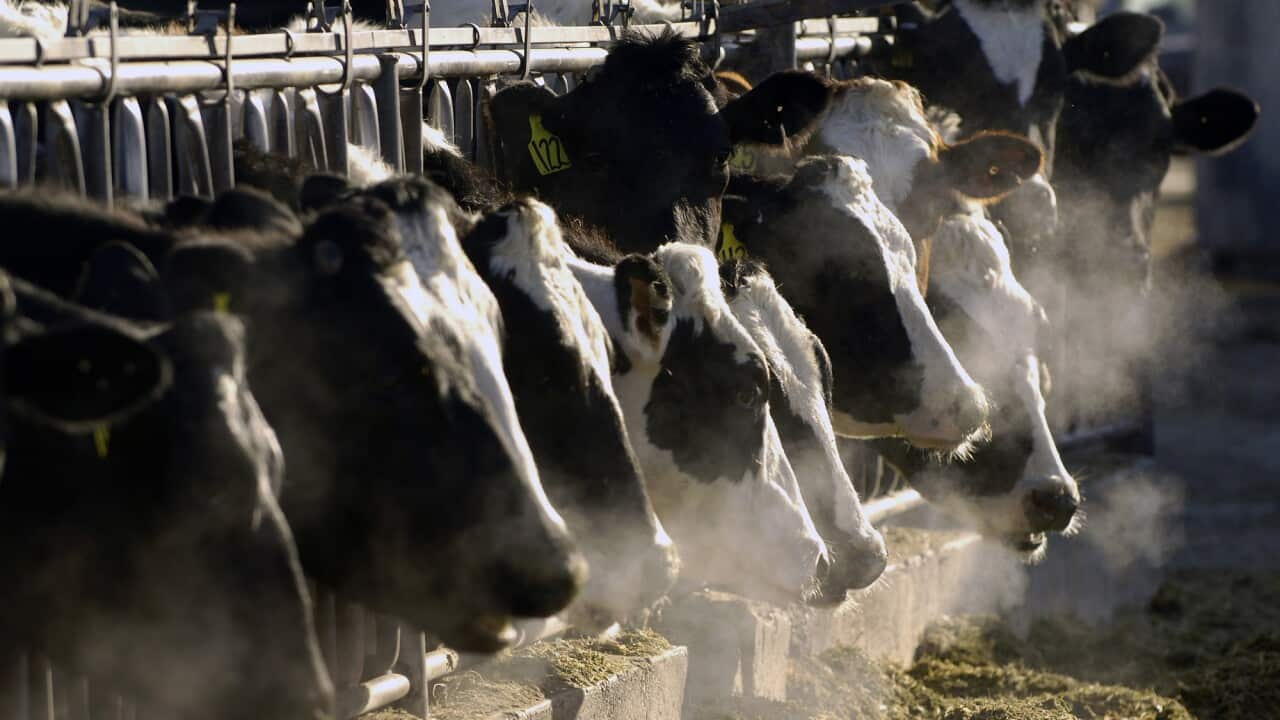Last month, a Texas dairy worker was infected with the virus - the first known transmission between a mammal and human.
And while the bird flu is yet be detected in Australia, experts are warning its arrival is inevitable and we must be prepared.
TRANSCRIPT
The H5N1 strain of bird flu first emerged in the 1996, but 2020 marked the beginning of what is now an unprecedented outbreak.
The virus has since been detected on every continent except Australia - even showing up in Antarctica for the first time.
It's already led to the deaths of tens of millions of poultry and wild birds.
And with the virus mutating, it has infected mammals including sea lions, ferrets, farmed mink and cats.
This year, cows joined the list.
It's a surprising development, given they were not thought to be susceptible to this type of influenza.
Veterinary scientist Robyn Alders is an honorary professor with the Development Policy Centre at the Australian National University.
She's and a member of the Lancet Commission on the Prevention of Viral Spillover.
"With this evolution to be able to infect and cause illness in dairy cattle, it means that the virus is spreading to fill more niches. So this is a concern because we know influenza viruses are very adaptable and they mutate and replicate very quickly."
The H5N1 avian influenza was detected in dairy cattle in March in the US state of Texas.
And then in April, a Texas dairy farmworker contracted the virus - the first known human infection through contact with an infected mammal.
Since then, bird flu has been detected in 36 cattle herds across nine US states.
Professor Alders says this is alarming because the virus' presence in mammals is a sign it's getting closer to humans.
"The more virus you have, the more opportunity you have to have a virus that may become capable of infecting people. And in the worst-case scenario, a virus that can then spread between humans."
Right now, the WHO says the overall public health risk posed by the virus is "low".
Since 2021, there have only been 28 recorded cases of human infection; and there's never been transmission between humans.
Still, authorities are on alert.
In Bangladesh, the poultry industry is crucial to both lives and livelihoods.
Ahasanul Hoque is a professor of veterinary epidemiology at Bangladesh's Chattogram Veterinary and Animal Sciences University.
He says a large-scale outbreak would be a "disaster" for the country.
He and a team of experts have been running training sessions with farmers in the Chattogram area on farm biosecurity and safety.
"So we have been working with the farmers to train them with increased biosecurity standards, particularly for small to medium scale farmers."
The virus is yet to reach Australia, likely due to strict biosecurity laws and the migratory routes of birds, but it may only be a matter of time.
Dr Michael Bonning is the President of the New South Wales branch of the Australian Medical Association.
"What we need to prioritise in these coming months is surveillance - to make sure we know if and when it gets here, but also prioritise keeping it out of the country for as long as possible so that graziers, so that farmers, so that communities can be appropriately prepared about what to look for."
In a statement, the Department of Agriculture told SBS, it's: "closely monitoring the outbreaks overseas..."
And: "Australia has nationally agreed response and cost-sharing arrangements in place to respond to animal disease incidents and outbreaks, including for avian influenza".
Professer Alders says the global community needs to re-think how it's producing food, warning the risk of disease jumping from animals to humans isn't going away.
"These intensive animal systems with high density of animals that are very genetically similar, do facilitate the spread of virus. If it's not avian influenza, it is going to be another virus."













